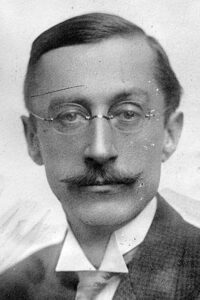
The Girl in his House
ARMITAGE had come thirteen thousand miles—across deserts, through jungles, over snow-clad peaks—as fast as camels and trains and ships could carry him, driven by an all-compelling desire Sixty-odd days ago he had been in the amber mines in the Hukainng Valley, where Upper Burma ends and western China begins; and here he was, riding up old Broadway—a Broadway that twinkled and glittered and glared with the same old colored clock lights. Men were queer animals. He had sworn never to set foot inside of New York again.
A paragraph in a New York newspaper, a sheet more than a year old and fallen to the base usage of wrapping paper and protecting temporarily a roll of pudgy Burmese cheroots from the eternal mold of the middle Orient, had started him upon this tremendous, swinging journey. A thousand times he had perused that paragraph. Frayed and tattered to the point of disintegration, the clipping now reposed in his wallet. He no longer disturbed it; it wasn’t necessary; he knew it by heart and could recite it word for word:
JOHN SANDERSON, the multi-millionaire packer, died yesterday at his summer home on Lake Michigan. He was sixty-nine years old.
The woman who had jilted Armitage was a widow.
Curious thing! He had come down from the top of the world, as it were, shamelessly, a flame in his heart that resembled a torch in the wind. So long as he pressed down through the jungles and deserts the flame burned with unabated ardor; but at Mandalay—the outer rim of civilization—it began to waver a little. At Rangoon, it was like a candle in a breathless room. But on the way over to Calcutta, it burst forth anew and never wavered again until he came out on the tea veranda of the Bertolini and stared across Naples at Vesuvius in the moonlight. Even then he had not realized what was happening—that his torch, having nothing celestial in its substance, was burning out.
Read or download Book
Harold MacGrath
Harold MacGrath (September 4, 1871 – October 30, 1932) was a bestselling and prolific American novelist, short story writer, and screenwriter. He sometimes completed more than one novel per year for the mass market, covering romance, spies, mystery, and adventure.
He was the first nationally known writer to be commissioned to write original screenplays for the new film industry. In addition, he had eighteen novels and three short stories adapted as films, in some cases more than once. Three of these novels were also adapted as plays that were produced on Broadway in New York City. MacGrath traveled extensively but was always based in Syracuse, New York, where he was born and raised.
Biography
Born Harold McGrath in Syracuse, New York, he was the son of Thomas H. and Lillian Jane McGrath. As a young man, he worked as a reporter and columnist for the Syracuse Herald newspaper until the late 1890s, when he published his first novel, a romance titled Arms and the Woman. According to the New York Times, his next book, The Puppet Crown, was the No.7 bestselling book in the United States for all of 1901.
MacGrath (as he spelled his name then) continued to write novels for the mass market about love, adventure, mystery, spies, and the like at an average rate of more than one a year. He had three more books that were among the top ten bestselling books of the year. At the same time, he published several short stories in such major American magazines as The Saturday Evening Post, Ladies Home Journal, and Red Book magazine. Several of MacGrath’s novels were also serialized in these magazines. He continued to have short stories published in such venues until he died in 1932.
Writing for films
In 1912, Harold MacGrath became one of the first nationally known authors to write directly for movies when he was hired by the American Film Company to create an original screenplay for a short film in the Western genre, titled The Vengeance That Failed.
MacGrath’s work was so popular that eighteen of his forty novels and three of his short stories were adapted as films. Some of the novels received more than one film adaptation. He also wrote the original screenplays for another four movies. His serial film The Adventures of Kathlyn (1903) featured Kathlyn Williams. While writing the screenplays for the thirteen episodes of the serial, he also wrote the related novel. It was published immediately after the December 29, 1913, premiere of the first episode of the serial. The book was available for sale in bookstores during the screening of the entire thirteen episodes, capitalizing on the publicity.
Three of his books adapted for film were also adapted as Broadway plays.






